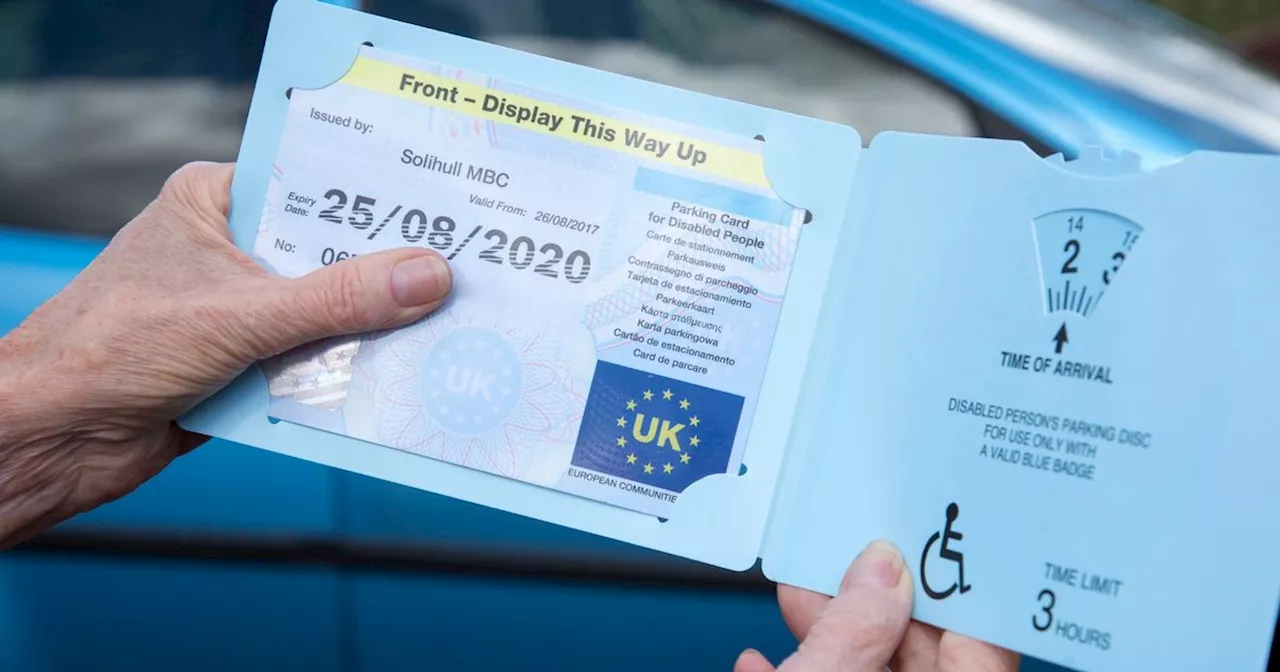This article provides a detailed overview of Personal Independence Payment (PIP) and its Scottish counterpart, Adult Disability Payment (ADP). It explains the assessment process, eligibility criteria, and how payment rates are determined.
The latest figures from the Department for Work and Pensions (DWP) show there are now more than 3.6 million adults across Great Britain claiming Personal Independence Payment ( PIP ), including 80,000 living in Scotland. However, it's important to be aware that Adult Disability Payment ( ADP ) has replaced all new claims for PIP for people living north of the border.
The devolved benefit is delivered by Social Security Scotland, and while it follows the same payment award rates and largely similar eligibility criteria as PIP, the information in this article should only be viewed as a guide - full details on ADP can be found here. \The most important thing to understand about the PIP claims process is that awards are based on how your condition, long-term illness or disability affects you - not the actual condition itself. The DWP makes this distinction clear in the 2024 edition of the online PIP Handbook. The guidance on GOV.UK explains: 'As the assessment principles consider the impact of a claimant’s condition on their ability to live independently and not the condition itself, claimants with the same condition may get different outcomes. The outcome is based on an independent assessment and all available evidence.' \When you are assessed for PIP, a health professional will look at your ability to carry out a range of daily living activities and mobility activities. The health professional will consider whether your health condition or disability limits your ability to carry out the activities and how much help you need with them. The health professional will then write a report for the PIP decision maker who will use all the evidence and decide whether you are entitled to the benefit, at what rate and for how long. PIP is made up of two parts, the daily living component and the mobility component. Each component can be paid at either the standard rate or the enhanced rate. The DWP PIP decision maker will determine whether your ability to carry out the component is limited, in which case you will be paid the standard rate, or if it is severely limited, in which case you will receive the enhanced rate. For those applying for ADP in Scotland, independent health professionals are not used, the entire application process is conducted in-house by Social Security Scotland
PERSONAL INDEPENDENCE PAYMENT Aduldisability PAYMENT PIP ADP SOCIAL SECURITY SCOTLAND DEPARTMENT FOR WORK AND PENSIONS DISABILITY BENEFITS ASSESSMENT PROCESS ELIGIBILITY CRITERIA
United Kingdom Latest News, United Kingdom Headlines
Similar News:You can also read news stories similar to this one that we have collected from other news sources.
 Understanding PIP and ADP: Benefits, Backdating, and Support for Disabled Individuals in Great BritainThis article explores the Personal Independence Payment (PIP) and its Scottish counterpart, Adult Disability Payment (ADP), providing insights into eligibility, benefits, backdating opportunities, and additional support services available for disabled individuals in Great Britain.
Understanding PIP and ADP: Benefits, Backdating, and Support for Disabled Individuals in Great BritainThis article explores the Personal Independence Payment (PIP) and its Scottish counterpart, Adult Disability Payment (ADP), providing insights into eligibility, benefits, backdating opportunities, and additional support services available for disabled individuals in Great Britain.
Read more »
 New Pension Age Disability Payment Now Available in Five Scottish Council AreasPension Age Disability Payment (PADP) is now available in five Scottish council areas, marking the first phase of a nationwide rollout. This new benefit aims to support individuals over State Pension age with disabilities, long-term health conditions, or terminal illnesses. Guidance clarifies the impact of PADP on existing Personal Independence Payment (PIP) and Adult Disability Payment (ADP) recipients, emphasizing that ADP claimants will continue to receive their benefits after reaching State Pension age. ADP will also replace PIP for the remaining 80,000 Scots claimants. The news provides a comprehensive overview of PADP, including eligibility criteria, application processes for both PIP and ADP, and alternative travel options for those who may not qualify for financial support. The article also highlights the ongoing transition from PIP to ADP and directs readers to relevant resources for further information and support.
New Pension Age Disability Payment Now Available in Five Scottish Council AreasPension Age Disability Payment (PADP) is now available in five Scottish council areas, marking the first phase of a nationwide rollout. This new benefit aims to support individuals over State Pension age with disabilities, long-term health conditions, or terminal illnesses. Guidance clarifies the impact of PADP on existing Personal Independence Payment (PIP) and Adult Disability Payment (ADP) recipients, emphasizing that ADP claimants will continue to receive their benefits after reaching State Pension age. ADP will also replace PIP for the remaining 80,000 Scots claimants. The news provides a comprehensive overview of PADP, including eligibility criteria, application processes for both PIP and ADP, and alternative travel options for those who may not qualify for financial support. The article also highlights the ongoing transition from PIP to ADP and directs readers to relevant resources for further information and support.
Read more »
 New PIP and ADP payment rates for people on standard, enhanced or mixed awardsA successful claim for PIP or ADP will be worth between £29.20 and £187.45 every week during the 2025/26 financial year.
New PIP and ADP payment rates for people on standard, enhanced or mixed awardsA successful claim for PIP or ADP will be worth between £29.20 and £187.45 every week during the 2025/26 financial year.
Read more »
 Millions Receive UK Benefits for Disabilities and Long-Term IllnessesOver 3.6 million adults in Scotland, England, and Wales are receiving payments of up to £737.20 every four weeks through Personal Independence Payment (PIP) or Adult Disability Payment (ADP). The benefit supports individuals with over 530 health conditions, focusing on how the condition impacts daily living tasks and mobility. The article provides an overview of PIP and ADP, including the most commonly claimed conditions and eligibility criteria, payment rates, and the application process.
Millions Receive UK Benefits for Disabilities and Long-Term IllnessesOver 3.6 million adults in Scotland, England, and Wales are receiving payments of up to £737.20 every four weeks through Personal Independence Payment (PIP) or Adult Disability Payment (ADP). The benefit supports individuals with over 530 health conditions, focusing on how the condition impacts daily living tasks and mobility. The article provides an overview of PIP and ADP, including the most commonly claimed conditions and eligibility criteria, payment rates, and the application process.
Read more »
 PIP & ADP: Could You Be Missing Out on Hundreds?Over 3.6 million adults in Great Britain claim Personal Independence Payment (PIP). In Scotland, Adult Disability Payment (ADP) has replaced PIP for new claimants. Both aim to help with extra daily living or mobility costs. While payments range from £28.70 to £184.30 per week, many may qualify for higher amounts if their condition worsens. A successful claim increase could boost annual income by up to £8,091.
PIP & ADP: Could You Be Missing Out on Hundreds?Over 3.6 million adults in Great Britain claim Personal Independence Payment (PIP). In Scotland, Adult Disability Payment (ADP) has replaced PIP for new claimants. Both aim to help with extra daily living or mobility costs. While payments range from £28.70 to £184.30 per week, many may qualify for higher amounts if their condition worsens. A successful claim increase could boost annual income by up to £8,091.
Read more »
 PIP Transfer to ADP in Scotland to BeginNearly 80,300 people in Scotland will see their Personal Independence Payment (PIP) awards transferred to Adult Disability Payment (ADP) over the next few months. This marks the beginning of a phased transition for everyone in Scotland receiving PIP or Disability Living Allowance (DLA) to the devolved Social Security System by the end of 2025. The transfer is largely administrative, with no changes for claimants in terms of benefits. Claimants will receive three letters after the transfer, including a 'certificate of entitlement' that can be used to apply for a Blue Badge, Vehicle Tax Exemption or an accessible vehicle or equipment lease from Motability.
PIP Transfer to ADP in Scotland to BeginNearly 80,300 people in Scotland will see their Personal Independence Payment (PIP) awards transferred to Adult Disability Payment (ADP) over the next few months. This marks the beginning of a phased transition for everyone in Scotland receiving PIP or Disability Living Allowance (DLA) to the devolved Social Security System by the end of 2025. The transfer is largely administrative, with no changes for claimants in terms of benefits. Claimants will receive three letters after the transfer, including a 'certificate of entitlement' that can be used to apply for a Blue Badge, Vehicle Tax Exemption or an accessible vehicle or equipment lease from Motability.
Read more »
